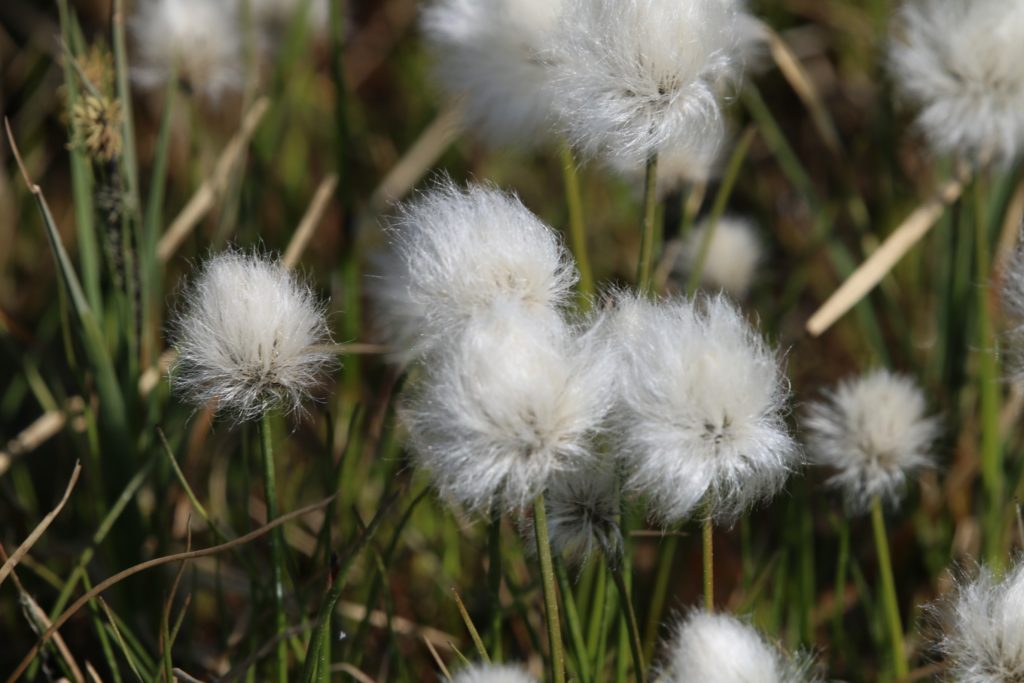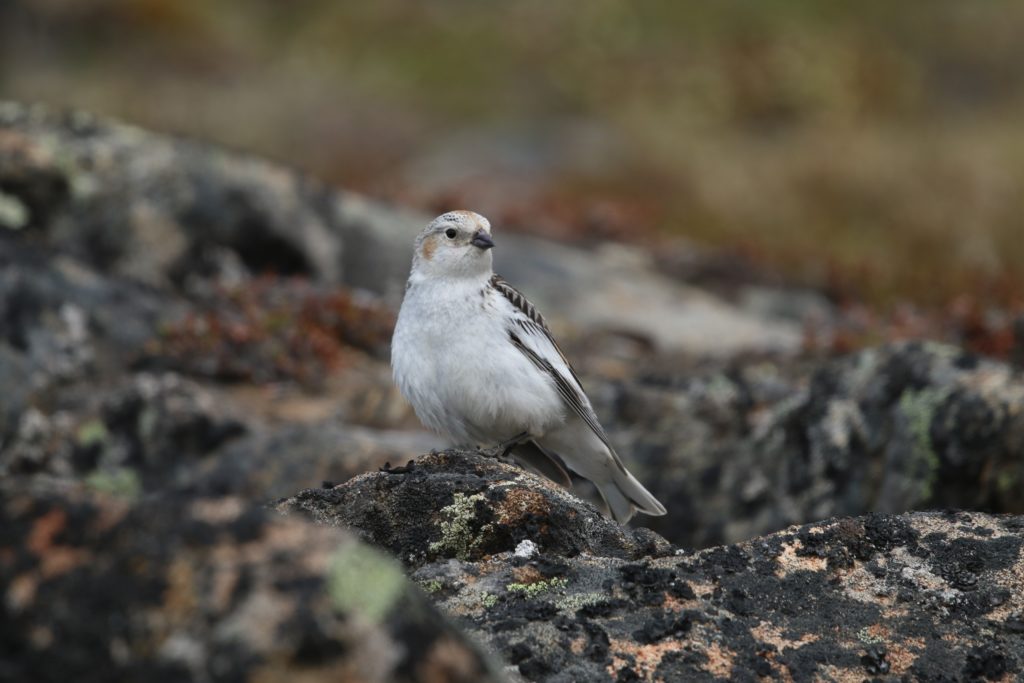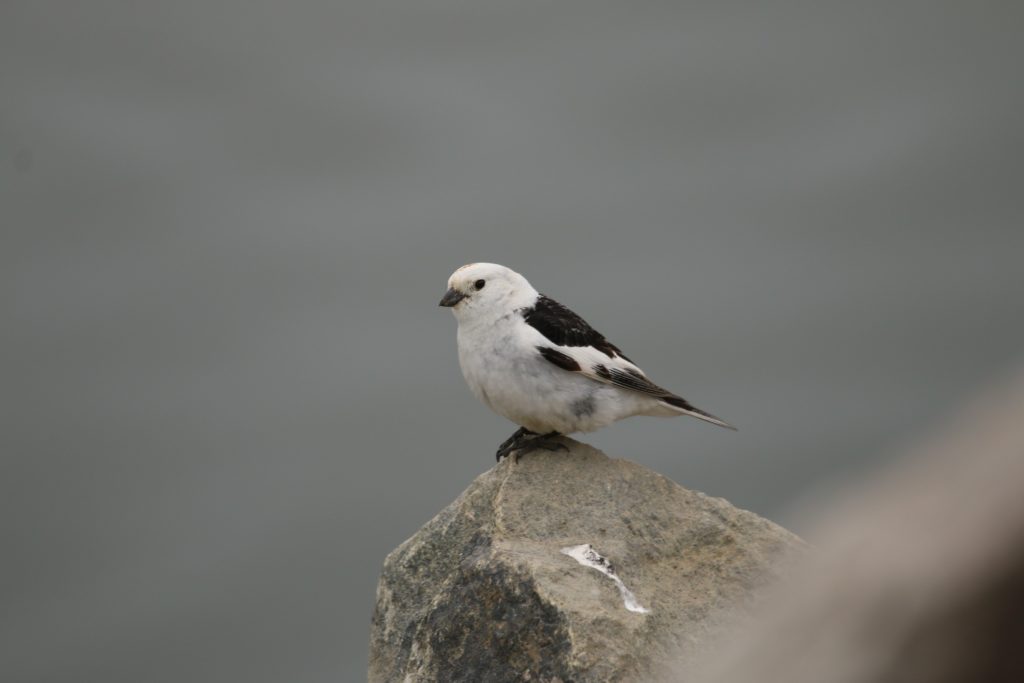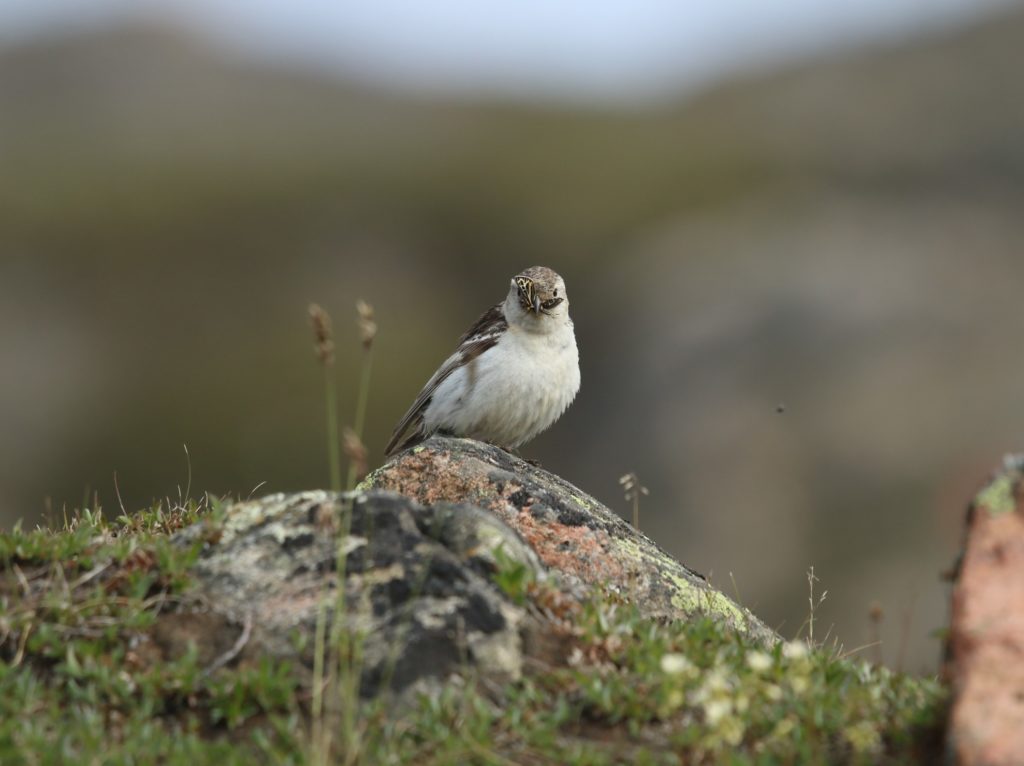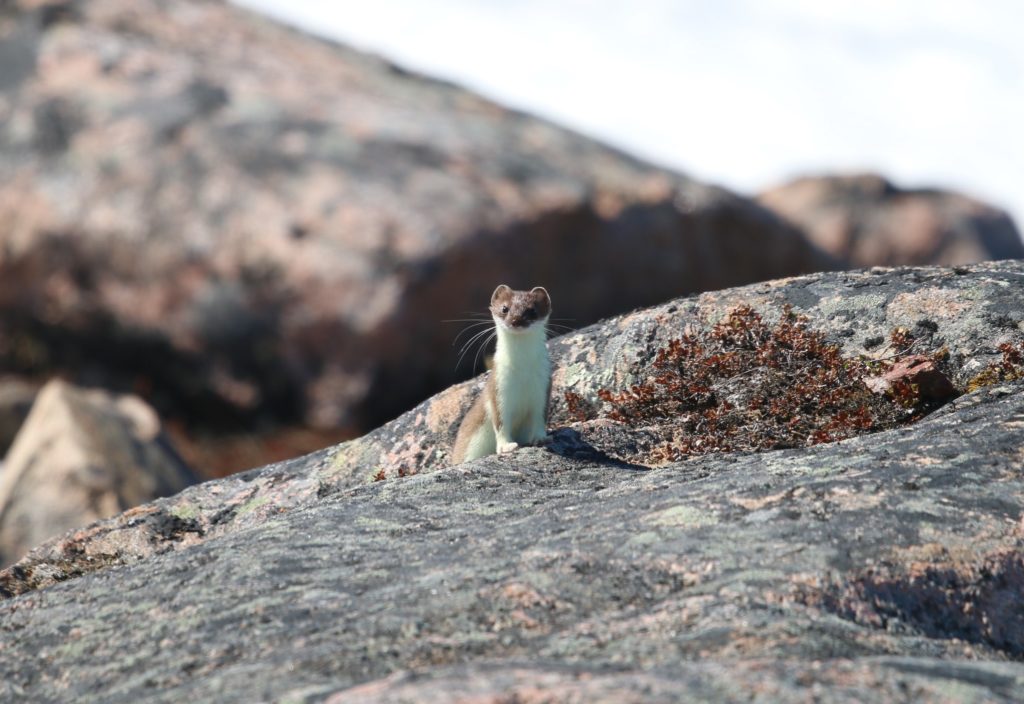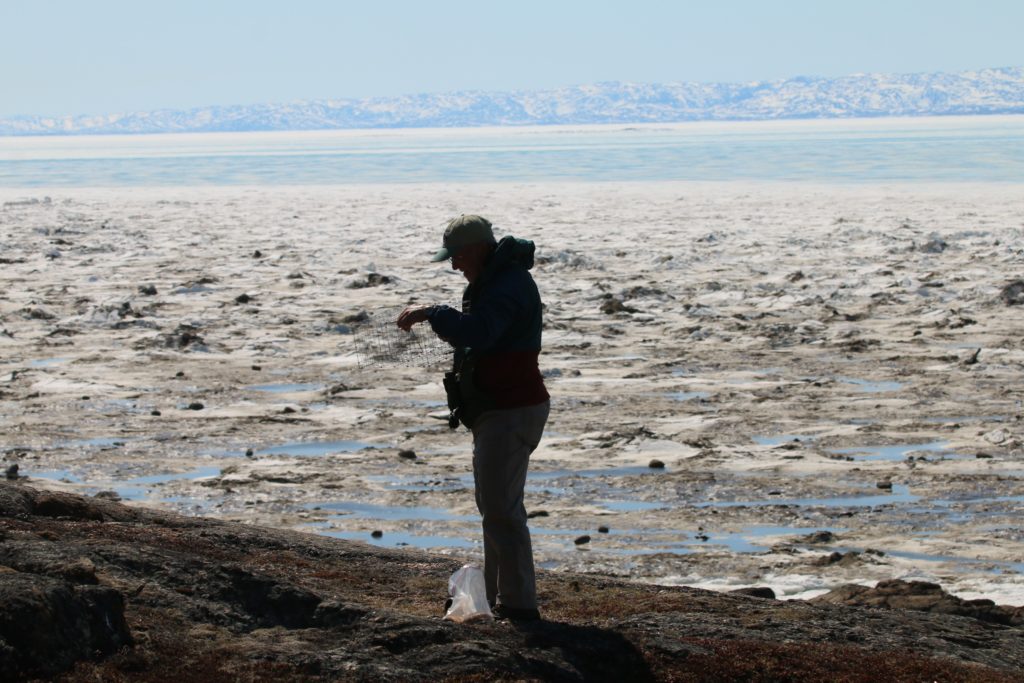
Setting out a Potter trap for Snow Buntings with frozen Frobisher Bay behind me – this was in the 2nd week of June. Temperature down by the shore was about 4 degrees. -SSP
I returned from the Arctic 2 weeks ago and seemed to jump from the refrigerator into the sauna. The most difficult adjustment for me has been handling the heat. But here’s one good method that brings a modicum of relief -if brief: looking at pictures of the Arctic where the highest temperature was around 15 but more usually hovered around 8. Just the memory makes you forget, for a moment, these temperature conditions. I was aided in this pursuit by receiving some very fine pictures of the experience from my young colleague, Samuelle Simard-Provencal aka “Sam”. I’d like to share them with you to help you think cooling thoughts….
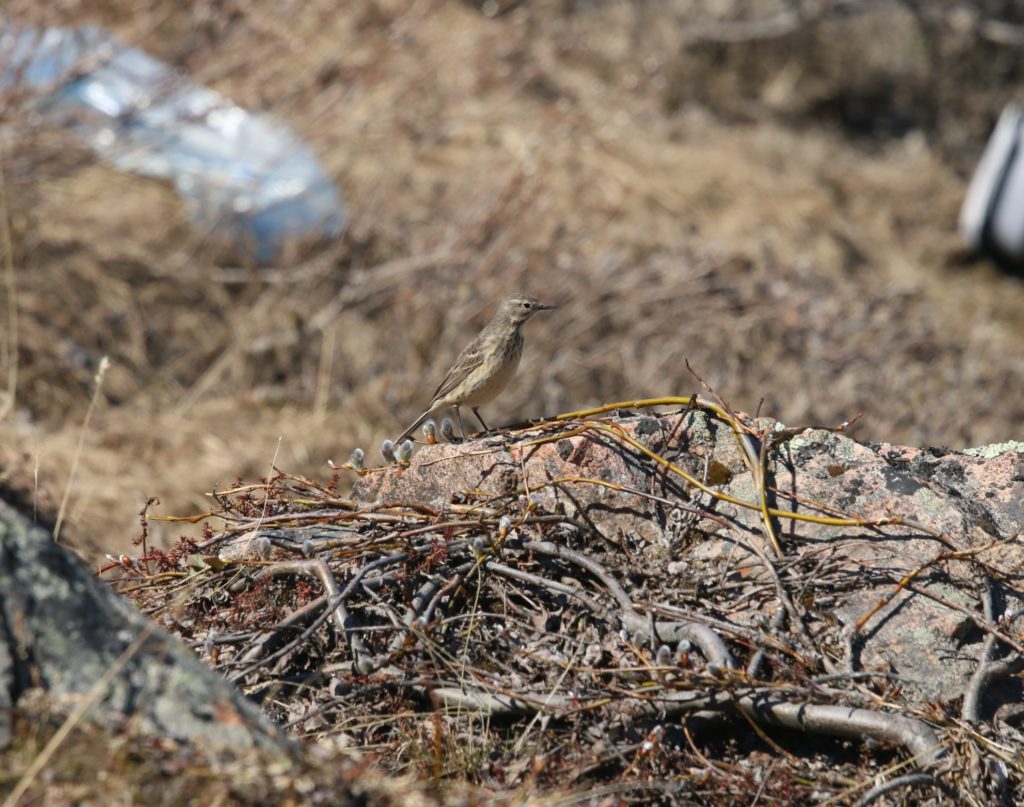
American Pipit were common in the right habitat – sparse grass tundra (of which there is a lot around Iqaluit. Note that this bird is standing next to an Arctic forest – a nice “stand” of dwarf willow – the only tree in the Arctic. -SSP
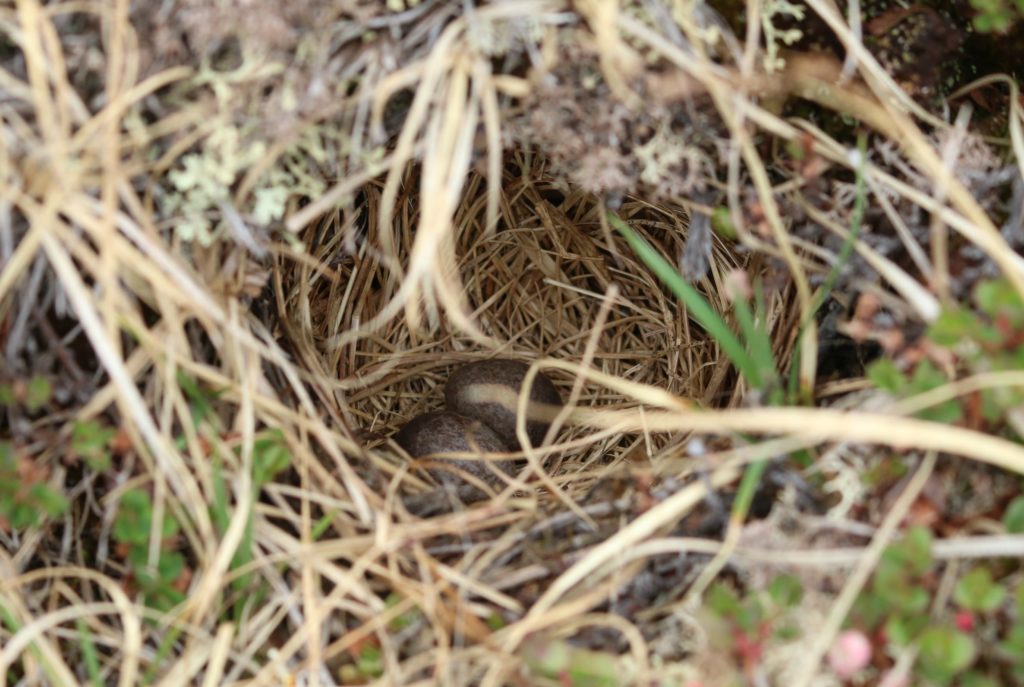
Pipit nests are VERY hard to find. Samuelle found this one when the sitting female exploded from almost right beneath her feet. -SSP
The next 2 pictures encapture, for me, what was a huge conundrum. There was a tall guy wearing high rubber boots trying to work his way across the swift-flowing, but shallow, Apex River. He seemed to get “stuck” in mid-stream and just stood there until a friend/colleague, shod in leather low-cut dress shoes, came along with a big plank which he tried to lay down, in the fast current, so the guy with boots could work his way along it. The plank got slippery and the current kept flipping it on its side so it was useless. Finally the guy with the boots just finished walking across and the guy in the shoes hopped from rock to rock and, I think, kept his shoes relatively dry. What was the point!?
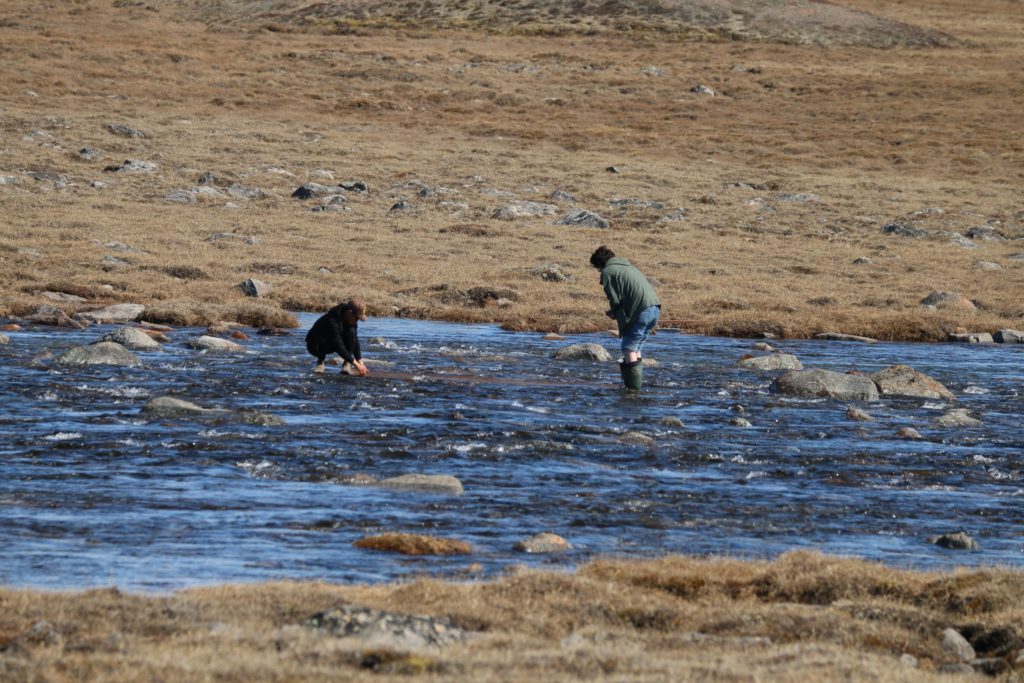
For some unexplainable reason (to me at least), the guy on the left, with low-cut shoes, came to the “rescue” of the guy on the right, with high rubber boots. He was laying down a plank for him to walk on and not get a soaker….which didn’t appear very likely. -SSP
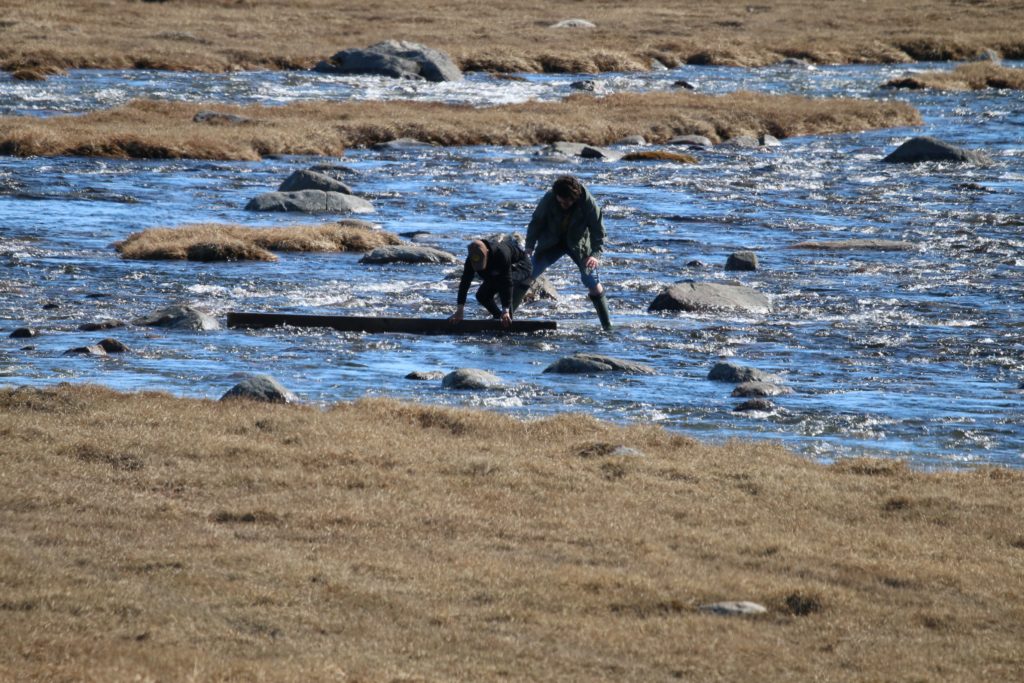
The plank was a poor choice as the water made it slippery and the current kept turning it on its side. Looks like the guy in the boots could have simply walked… -SSP
Our main study species was the Snow Bunting.
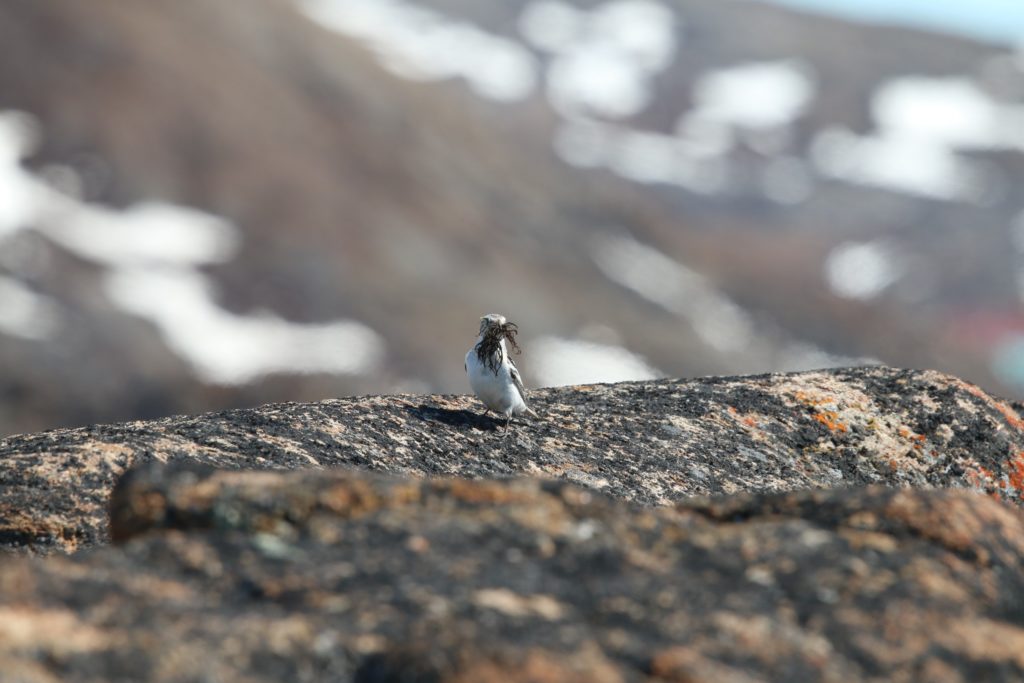
The first day of Snow Bunting nest building consists of the female laying down an insulating layer of moss. -SSP
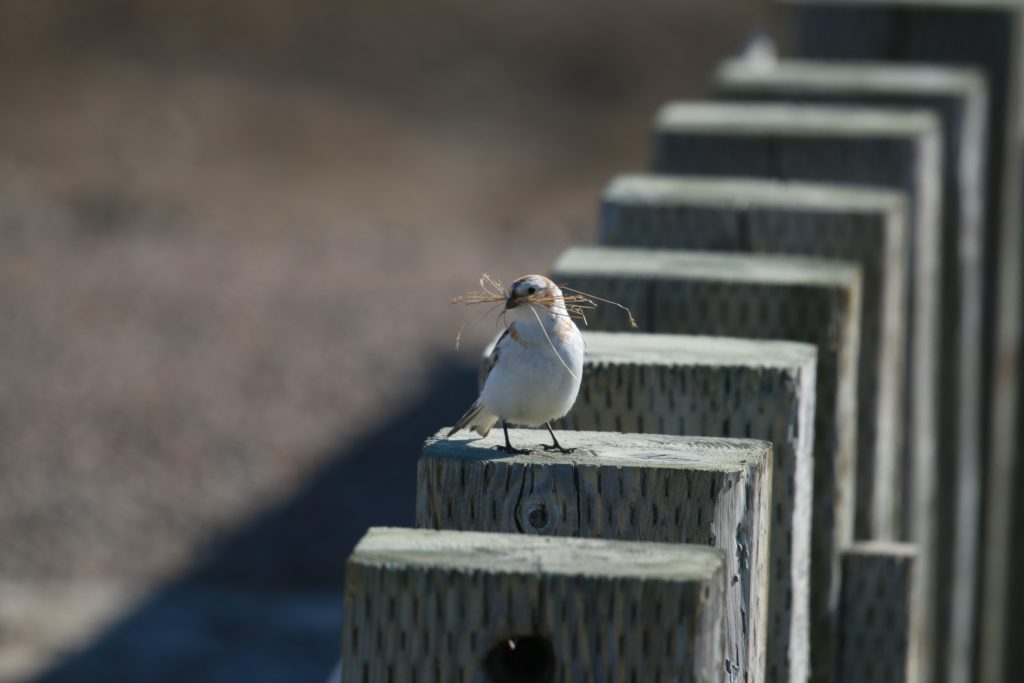
The next two days consist of adding layers of grass and shaping it into a neat bowl. The 4th day is feathers – which are surprisingly findable on the open tundra. -SSP
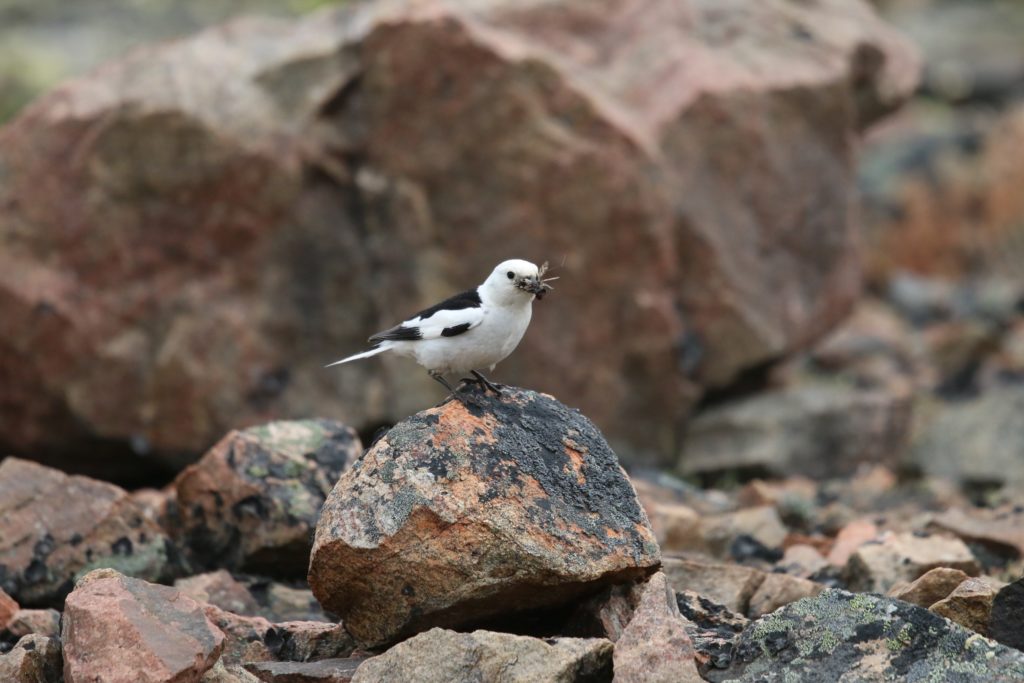
Male carrying food for its offspring. This is the easiest time to find nests as the parents bring food over 12 times an hour – sometimes much more often. -SSP
In future years I hope we get around to studying Norther Wheatears. These hardy birds migrate each year between Sub-Saharan Africa and the Arctic. Interestingly, they appear to compete with Snow Buntings in the area. Not so much for food resources as for nesting sites as they also prefer boulders and cracks in rocks.
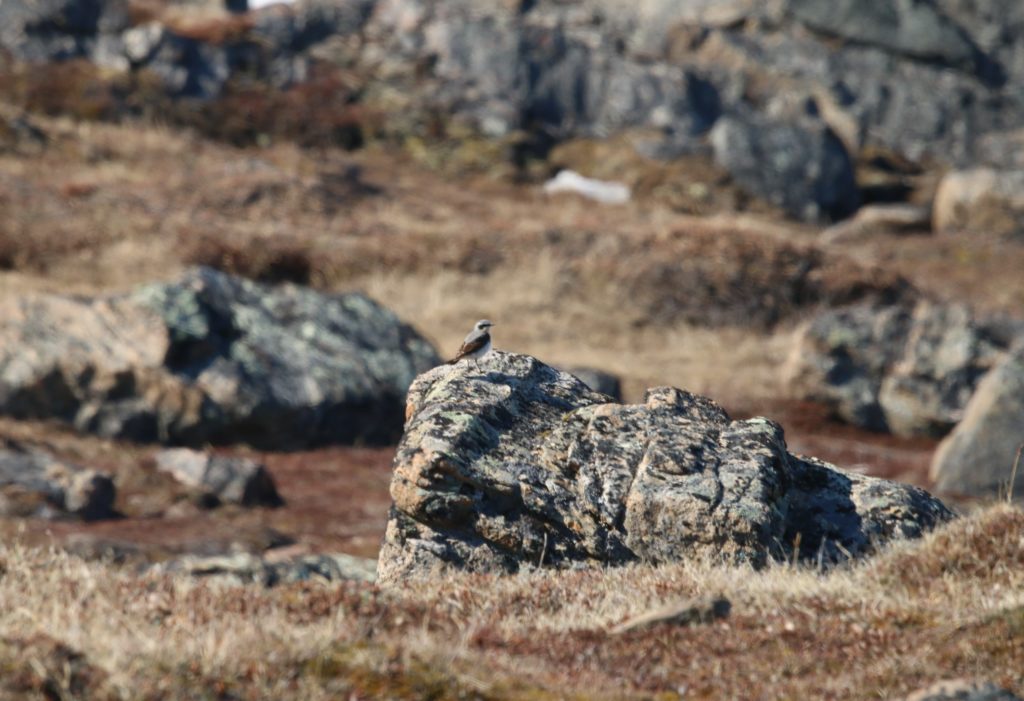
My favourite: male Northern Wheatear. It’s in prime habitat with nesting rocks and cracks all around. -SSP
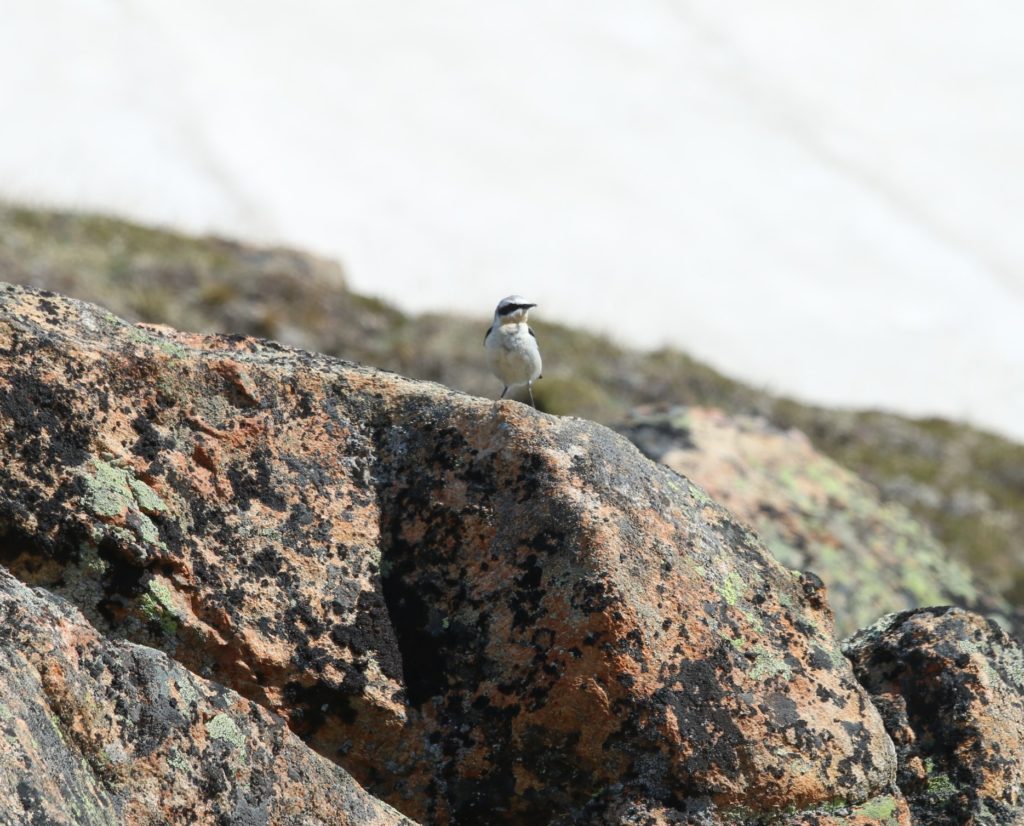
Another look at a male Northern Wheatear. We weren’t looking for their nests particularly but found 4 without too much trouble. One right in town, 25 m. from my bedroom window. -SSP
Other Photos:

Long-tailed Ducks are “sea ducks” but they come inland to nest in the numerous ponds dotting the tundra. -SSP

The call of a Sandhill Crane seems to add to the wild feeling of the Arctic. This bird flew over high overhead. -SSP
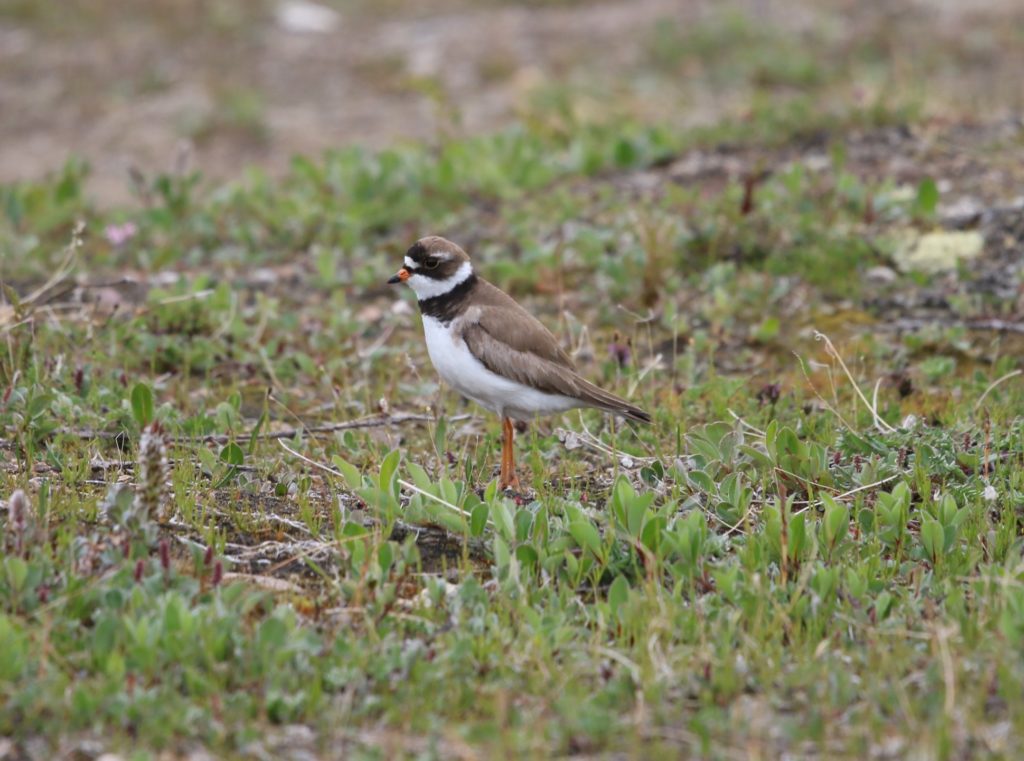
Semipalmated Plovers were relatively common and in a variety of places, from open tundra to sewage lagoon edge. This one was on the tundra. -SSP
Rick

